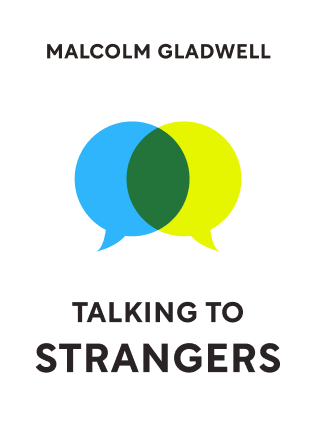

This article is an excerpt from the Shortform book guide to "Talking to Strangers" by Malcolm Gladwell. Shortform has the world's best summaries and analyses of books you should be reading.
Like this article? Sign up for a free trial here .
Who interrogated Khalid Sheikh Mohammed? What did it take to get him to confess and was he telling the truth?
In March 2013, Khalid Sheikh Mohammed was captured and brought to the CIA for questioning. His interrogation was commissioned to James Mitchell and Bruce Jesson, who were tasked to extract information from him regarding the upcoming attacks on the US.
Keep reading for more about the interrogation of Khalid Sheikh Mohammed.
The Interrogation
In March 2003, CIA interrogators James Mitchell and Bruce Jesson were brought into a CIA black site to deal with a high-value, highly difficult prisoner, Khalid Sheikh Mohammed. KSM was a senior official in the terrorist group Al Qaeda and was expected to have information regarding upcoming terrorist attacks on the United States. KSM had proven to be a very difficult prisoner—two CIA interrogators had tried and failed to extract information from him. So Mitchell and Jesson were called in to question KSM because of their expertise in “high stakes” interrogation practices known as “enhanced techniques.”
The CIA asked Mitchell and Jesson, both trained in the SERE program, to define the most definitively effective methods of enhanced interrogation. Mitchell and Jesson listed:
- Walling: The interrogator bangs the prisoner’s head against a special wall to create a loud noise and a sense of total confusion.
- Sleep deprivation: Prisoners were made to stand for hours or even days.
- Waterboarding: The prisoner is placed on a gurney at a 45-degree angle, with his head below his feet and a cloth covering his face. The interrogator pours water into the prisoner’s mouth at intervals up to ten seconds, to create the effect of drowning. Waterboarding was the last resort in an enhanced interrogation. Their mission was to get the prisoner to comply—to volunteer useful information.
Khalid Sheikh Mohammed’s Confession
From their first meeting with Khalid Sheikh Mohammed, Mitchell and Jesson knew that it would require every enhanced technique in their arsenal to get him to talk. They could tell he was hard-core because he wasn’t even affected by waterboarding—he was able to resist the one technique that was almost 100% effective on other prisoners. Beside that, Khalid Sheikh Mohammed realized that he was in prison for the rest of his life so he didn’t have much to gain by complying.
Khalid Sheikh Mohammed’s interrogation lasted for three full weeks. Then one day, KSM suddenly stopped resisting. On March 10, 2007, KSM issued a public confession after being in captivity for four years.
Speaking through a “personal representative,” Khalid Sheikh Mohammed admitted to single-handedly planning, organizing, and executing the 9/11 attacks on America. He also took (at least partial) responsibility for 31 other Al Qaeda operations and attempted operations. The disturbingly detailed confession was considered a big victory for Mitchell, Jesson, and the CIA.
Was Khalid Sheikh Mohammed Telling the Truth?
KSM’s sudden and complete cooperation raises a question: Was KSM telling the truth?
Think of it this way:
- KSM had been under traumatic stress for four years. His memories could have suffered and his information could be unreliable.
- Mitchell and Jesson had deprived KSM of sleep for days at a time, which could result in structural changes to the brain’s functions.
- KSM could have confessed as a means of getting Mitchell and Jesson to stop their harsh interrogation practices, like waterboarding and walling.
- KSM knew he would never be released. The only thing he had left was his legacy. He could have made his confession as a way to take credit for everything he possibly could.
Despite all of these critical doubts, no one questioned Khalid Sheikh Mohammed’s interrogation or challenged his confession. Why? Because with the threat of war on the horizon, it was essential to try and achieve peace with the enemy.
Mitchell and Jesson were in a difficult position. They needed Khalid Sheikh Mohammed to give them any information he had about any possible upcoming terrorist activity. But the more they interrogated KSM, the less trustworthy his information became. The quality of the interaction was diminished every time they attempted to get him to talk.

———End of Preview———
Like what you just read? Read the rest of the world's best book summary and analysis of Malcolm Gladwell's "Talking to Strangers" at Shortform .
Here's what you'll find in our full Talking to Strangers summary :
- Why we don't understand strangers
- How to talk to strangers in a cautious way so you don't get fooled
- How Hitler deceived so many world leaders






